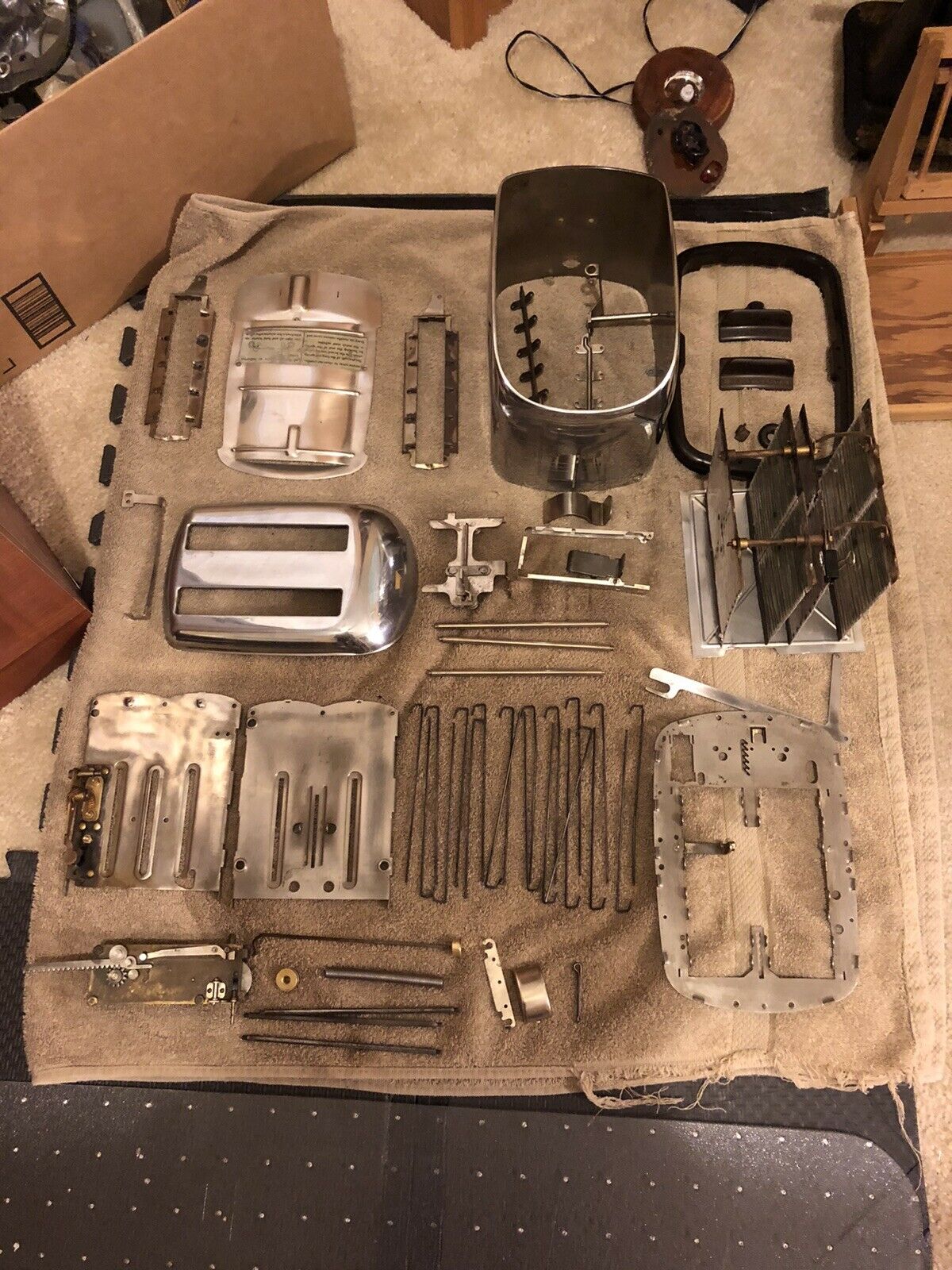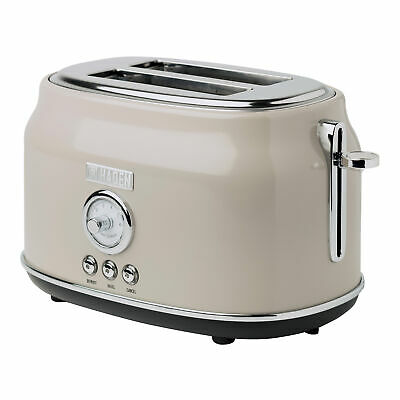-40%
1937 Toastmaster Model 1B6 Electric "Pop-Up" Toaster Refurbished and Restored
$ 42.24
- Description
- Size Guide
Description
The Toastmaster 1B6Two slice Pop-Up Toaster
This Art Deco themed model 1B6 serial number 881847 was manufactured between July of 1937 and June 1938. This and its successor the 1B8 were also referred to as "Locomotive" toasters because of their streamlined design similar to train locomotives of that era.
Vintage Toastmaster toasters are great candidates for restoration. They were made to last. I have restored dozens if not more toasters of different makes and models. A few years ago I decided to focus only on early Toastmaster models. They are just that good and they make a great addition to "Retro" kitchens. They are classic well engineered examples of the machine age.
The original cloth cords are usually suspect since the internal wire insulation rots away. I have replaced the original cord with a period "New Old Stock" cloth cord rewired and tested for electrical safety.
There are 3 internal wires that while still good (Solid Copper) the covering or insulation was most likely Asbestos commonly used at the time, while not any real danger to the user I chose to replace them with modern high temperature (+2000 degrees) wire as seen in photo.
The base, handles dark/light knob and cord lock are all made of the early (before plastic) materiel known as Bakelite. This dense material is very strong and is nearly impossible to melt. Its characteristics are closer to pottery then plastic so can get chipped or cracked. When I received this unit it had not been well packed and the front right corner was damaged. I repaired it the best I could. This can be seen in close up picture under Light/Dark knob.
When I receive these toasters for restoration some look bright shiny and ready to go. I don't even plug them in.
Inside can be a chamber of horrors after so many years, in the case of this 1B6 83 Years.
I have never found anything alive inside any of the probably over 100 toasters I have restored however have found some insects that used to be...but usually just a greasy toast crumb encrusted mess sluggish if working at all which can also be seen in my before and after pictures.
I mention this since while there may be less expensive examples of this same model available and my starting price might seem high, never trust a toaster by its chrome cover.....
HOW IT WORKS:
These 1B models are fairly simple. You push down firmly on the front handle ensuring it locks down on the bottom. This starts a ticking timer that mechanically moves an arm that eventually releases the two arms holding the toast. The small Dark/Lite knob increase or decreases the speed of the timer which results in light or darker toast.
But there is another setting that few owners know about, and it is ingenious.
Under the bottom plate or crumb tray (held on be 2 twist off nuts) is a adjustable mechanism made of a bio-metallic (combination of metals) strip which bends or curls when the strip reaches a certain temperature.
This adjustable strip is currently calibrated for this toaster. As it heats up to max temperature you will hear the timer increase speed faster and faster. This is normal and allows bread that might be toasted immediately after first slices are done to not burn in an already preheated toaster.
When the strip bends it makes contact with a rod attached to the timer mechanism which increases the speed of timer past the limits of the outside knob. In the unlikely event that you will ever need to mess with it there are 2 adjustment options.
The easiest is one of the mounting screws has a wider hole so the entire mechanism can be moved about 1/4 of an inch. Near the center of the strip is another more precise pin setting with an adjustable screw. I have set it to actually work so if you here the ticking of the timer continue to increase don't worry, its not going to explode. Its just another example of the complex engineering or in this case perhaps over engineering of these classic machines.




















